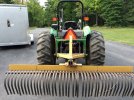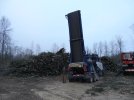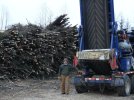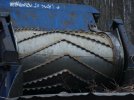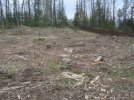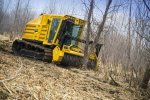bigboreblr
5 year old buck +
Looking to get a log landing converted to a food plot. Open areas are hard to come by in my logging company lease.
The loggers chip trees for pulp, so there rotting chips everywhere. Beech and birch are starting to pop through, which Ill take care of. The nighboring section of the clearing is low pH sandy soil with weeds that grow in porr soils.
My plan is to make it a volunteer rye field for 3 years or so to build up soil quality, with me adding seed annually too. With the rotting chips and sawdust, I ghave no clue how to get a soil sampole for this? Doing a 3/4 ton / acre liming sometime in june. Can I plant the rye then and expect it to over winter? Plan B might be to oat and clover the spot in june, then lightly harrow and seed rye in august.
I plan on bring home a few 5 gallon buckets of the "soil" and doing small seed experiments.
The loggers chip trees for pulp, so there rotting chips everywhere. Beech and birch are starting to pop through, which Ill take care of. The nighboring section of the clearing is low pH sandy soil with weeds that grow in porr soils.
My plan is to make it a volunteer rye field for 3 years or so to build up soil quality, with me adding seed annually too. With the rotting chips and sawdust, I ghave no clue how to get a soil sampole for this? Doing a 3/4 ton / acre liming sometime in june. Can I plant the rye then and expect it to over winter? Plan B might be to oat and clover the spot in june, then lightly harrow and seed rye in august.
I plan on bring home a few 5 gallon buckets of the "soil" and doing small seed experiments.
